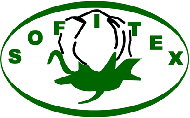This is certainly an unbarred availableness article delivered under the Creative Commons Attribution Permit, and therefore it permits unrestricted low-industrial fool around with, shipments, and you can reproduction in just about any medium, considering the original tasks are safely quoted.
Point
To compare Good allele frequencies of your own 845G>A mutation out-of ten Slavic populations inside main, eastern, and you may southern area Europe ranging from each other and with almost every other European communities.
Strategies
Brand new 845G>An effective mutation on the DNA away from eight hundred Gloss neonates accumulated in 2005-2006 is reviewed by polymerase chain response-limit fragment duration polymorphism. The information was indeed compared with account from other places.
Efficiency
We identified 381 GG homozygotes, 18 GA heterozygotes, and 1 AA homozygote. The 845A allele frequency was 2.5%, which makes the summary figure for Poland from this and previous studies 3.5%. The average prevalence for Poland and other West Slavic countries was 3.6%, similar to Russia (inhabited by the East Slavs, 3.5%). The average prevalence in South Slavic countries was 2.2%, gradually decreasing from 3.6% in Slovenia to 0% in Bulgaria, with a longitudinal linear gradient (adjusted R 2 = 0.976, P < 0.001).
Findings
The west and you can Eastern Slavs, in addition to Finland, Estonia, Germany, Austria, Hungary, Slovenia, and you can Croatia, function a team which have 845A allele wavelengths ranging from step three% and you can 4%. From the Southern Slavs, you will find a steady decrease in this new prevalence from 845A allele out of northwest so you're able to the southern area of, which have a surprisingly exact east-western linear gradient.
For the 1996, a few major HFE gene mutations (845G>Good and you may 187C>G) accountable for a genetic kind of hemochromatosis were known (1). Genetic hemochromatosis is a type of autosomal recessive infection characterized by enhanced metal consumption. This has tall systematic outcomes like liver cirrhosis, all forms of diabetes mellitus, arthropathy, cardiomyopathy, and you can hormonal malfunction (2). A total of sixty% so you're able to 96% off patients that have hemochromatosis from inside the Europe feel the mutation 845G>A for the exon cuatro. This leads to cysteine so you can tyrosine replacement in the status 282 (C282Y) of one's polypeptide strings, ultimately causing destabilization of one of bridging sulfide particles interrupting HFE binding to help you ?2-macroglobulin (1,3). The brand new HFE polypeptide strings manages to lose being able to join to transferrin receptor, hence results in a great 200-300% rise in metal intake out-of dinner. The severity of attacks during the homozygotes is changeable and you may relies on the new competition, ages, sex, and you can diet plan (dos,cuatro,5). Merryweather-Clarke mais aussi al (6) claimed the best incidence out of 845A HFE from inside the northwestern Europe (5.dos so you're able to 10.1%), internet explorer, Sweden, Norway, Uk, and you may Ireland. In the Finland, Hungary, Poland, Russia, Austria, Germany, Czech Republic, and https://internationalwomen.net/sv/latin-kvinnor/ you may Slovakia brand new incidence is actually anywhere between step three.dos and you can cuatro%. Inside the south Europe (Greece, Romania, Italy, and Spain), new incidence is quite reasonable (6-18) along with Turkey it is becoming non-existent (7). Considering new study, France (6.1%) are now able to be added to the fresh new northwestern group (19,20). Given that major comparison of your prevalence between European countries by Merryweather-Clarke et al (6) integrated couple investigation for the Slavic communities, we further assessed new 845A HFE regularity on the Polish populace and you may opposed it along with other Slavic populations and in earlier times wrote efficiency, also computed its shipping along side whole European countries.
Material and techniques
The study sample comprised 400 consecutively born neonates (187 female and 312 male) delivered at the Neonatology Department, Pomeranian Medical University, Szczecin, Poland in 2005-2006. All neonates were of Polish origin, with Polish grandparents, and informed consent was obtained from all parents. The Ethical Committee of the Pomeranian Medical University approved the protocol of the study (BN- ). Genomic DNA from neonates was extracted from 100 ?L of umbilical cord blood using the QIAamp DNA Blood Mini Kit (QIAGEN, Hilden, Germany). For identification of the 845G>A HFE mutation, we used polymerase chain reaction (PCR)-restriction fragment length polymorphism. About 20 ng of genomic DNA was used with a PCR mixture (10 ?L) containing 10 ? buffer (pH 8.3, 1.5 mM MgCl2), 0.2 mM each of the deoxynucleoide triphosphates, 0.5 U Polymerase Taq (MBI Fermentas, Vilnius, Lithuania), and 4 pmol each of the forward and reverse primers. 5?- CCT CAT CCT TCC TCT TTC CT-3` was used as a forward primer and 5?- TCC TCA GGC ACT CCT CTC AA-3` as a reverse primer (TIB MOL BIOL, Poznan, Poland). PCRs were performed in a Mastercycler Gradient thermal cycler (Eppendorf, Hamburg, Germany), with the following temperature profiles: initial denaturation at 94°C for 5 minutes, 37 cycles of 20 seconds at 94°C, 40 seconds at 54°C, and 40 seconds at 72°C; with a final extension step at 72°C for 8 minutes. Amplification was followed by digestion of the 367 bp product using the RsaI restriction enzyme (5?-GTvAC-3?) (MBI Fermentas) for 3.5 hours at 37°C. PCR digestion products were separated on 3% agarose gels, stained with ethidium bromide, and recorded using a DS-34 Polaroid Instant Camera (Polaroid, Dreieich, Germany) under UV light (Transilluminator 4000, Stratagene, La Jolla, CA, USA). The RsaI digestion yields fragments of 225 and 142 bp for G845 homozygotes; 225, 142, 113, and 29 bp for heterozygotes; or 225, 113, and 29 bp for 845A homozygotes. Genotypes of GA and AA patients were also confirmed by DNA sequencing (3100-Avant Genetic Analyzer, Applied Biosystems Hitachi, Foster City, CA, USA).

